
Celebrating the opening of Princeton’s new Lewis Center for the Arts complex
 Princeton University’s Lewis Center for the Arts and the Department of Music will celebrate the opening of the new Lewis Arts complex with a multi-day Festival of the Arts on October 5 through 8 on the Princeton campus. The Festival, which is open to the public, will feature dozens of concerts, plays, readings, dance performances, art exhibitions, multidisciplinary presentations, community workshops and site-specific events at venues across the campus, most of which will be free.
Princeton University’s Lewis Center for the Arts and the Department of Music will celebrate the opening of the new Lewis Arts complex with a multi-day Festival of the Arts on October 5 through 8 on the Princeton campus. The Festival, which is open to the public, will feature dozens of concerts, plays, readings, dance performances, art exhibitions, multidisciplinary presentations, community workshops and site-specific events at venues across the campus, most of which will be free.
“We’re having a party for the arts, and we hope to offer something for everyone!” notes Michael Cadden, chair of the Lewis Center.
“We are delighted to offer to the University, the Princeton community, and our many friends and guests a veritable feast of artistic delights,” adds Wendy Heller, chair of the Department of Music. “We celebrate not only the opening of these beautiful spaces and what they promise our students for the future, but the extraordinary accomplishments of all of our students and faculty, past and present, in the performing and creative arts.”
The new multi-building arts complex along Alexander Street and University Place on the south edge of campus, adjacent to McCarter Theater, will take the arts at Princeton to even greater heights by significantly expanding the performance, rehearsal and teaching spaces for the arts in new state-of-the-art, purpose-built facilities. The Center anchors the 22-acre Arts and Transit Neighborhood, a development that also includes Cargot Brasserie restaurant (set to open this summer) and The Dinky Bar & Kitchen located in two renovated former train station buildings, a new Wawa convenience store, and a new train station surrounded by a park-like setting with extensive landscaped plazas, pathways and green spaces.
The Center will house the Lewis Center for the Arts’ Programs in Dance, Music Theater, and Theater and the Princeton Atelier, and the Department of Music’s expansion of its instructional and research facilities in the New Music Building to supplement the Woolworth Center of Musical Studies. The complex houses the Wallace Dance Building and Theater, including the Hearst Dance Theater; the Arts Tower, which includes the Hurley Gallery, administrative offices and additional studios; and the New Music Building. The three buildings are connected at ground level by a Forum, an 8,000 square-foot open indoor gathering space that will serve as a lobby for the various arts venues in the complex and as an additional informal performance space. Above the Forum is an outdoor plaza with a reflecting pool. Skylights in the pool filter natural light into the Forum below. These new facilities supplement existing teaching, exhibition and performance spaces, allowing the University to realize its vision of a vibrant campus infused by the arts everywhere you look.
The complex was designed by Steven Holl Architects. Holl, a 2012 American Institute of Architects Gold Medalist, has designed landmark arts venues around the world, including the forthcoming expansion of the Kennedy Center in Washington, D.C. In 2014, he received the Praemium Imperiale award for his contributions to the development, promotion and progress of the arts.
The new arts complex is named for and was made possible in part through a $101 million gift to the University made in 2006 by the late Peter B. Lewis, Princeton Class of 1955 and former University trustee.
Following are some highlights of the Festival with a full schedule to be released and posted in August at LCAOpening.princeton.edu. Those interested in receiving email updates on the Festival schedule can sign up on the website.
The Festival weekend will open on Thursday, October 5 with the biennial Princeton Poetry Festival in the Berlind Theatre at McCarter Theatre Center, presented by the Lewis Center’s Performance Central. This unique poetry event will showcase poets from Canada, China, Cuba, Iceland, Macedonia, Northern Ireland, the Netherlands, Serbia, the U.K, and U.S. in a series of readings and panel discussions organized by Pulitzer Prize-winning poet and Princeton faculty member Paul Muldoon. The Poetry Festival continues on October 6.
Premiering on Thursday is a specially commissioned multimedia “electronic fanfare.” This new work, currently in the design and planning stages, is expected to feature original music performed on specially-made instruments conceived by Department of Music faculty member Jeff Snyder and performed by the Princeton Laptop Orchestra (PLOrk), Tilt Brass, and Sō Percussion, the Edward T. Cone Ensemble-in-Residence at Princeton, combined with kinetic lighting, bodies in space, wave robotics, and rigging all interacting with the building’s architecture. Lighting designer and Director of the Program in Theater Jane Cox and Assistant Professor in Princeton’s School of Architecture Axel Kilian are collaborating on the project with Snyder. The event will be repeated throughout the Festival.
Princeton University Concerts opens its PUC125: Performances Up Close series with a performance by the Norwegian Baroque ensemble Barokksolistene under director Bjarte Eike on October 5. This series brings audience members onstage with the artists in hour-long intimate performances. This “Double Deal” program offers an evening of music from English theaters and the court in the time of Henry Purcell at 6 p.m. in Richardson Auditorium, followed by an “Alehouse Session” featuring songs and melodies from the pubs and taverns of 17th century England at the Lewis Arts complex at 9 p.m. Tickets are already on sale for this event — visit the Princeton University Concerts website for details.
Douglas Gordon’s 1993 art installation 24 Hour Psycho inaugurates the new Hurley Gallery in the arts complex. The work consists entirely of an appropriation of Alfred Hitchcock’s classic 1960 film Psycho slowed down to approximately two frames per second, rather than the usual 24. As a result, a full viewing of the film lasts for exactly 24 hours, rather than the original 109 minutes. The installation was an important work in Gordon’s early career and is noted for introducing themes common to his work, such as recognition and repetition, time and memory, complicity and duplicity, authorship and authenticity, darkness and light. 24 Hour Psycho will be on view September 29 through October 22.
On October 6 an as yet untitled, new adaption of Euripides’ The Bacchae by Obie Award-winning playwright and Princeton alumnus Branden Jacobs-Jenkins ‘06 will have its world premiere to inaugurate the new Wallace Theater. Commissioned by the Lewis Center’s Program in Theater through the Roger S. Berlind ’52 Playwright-in-Residence Fund, the new play places this classic of the Greek stage in a contemporary setting with a DJ, dance music, cell phones and live feed video. It will be directed by another Princeton alumnus and Obie Award-winner, Lileana Blain-Cruz ‘06. The 3,600 square foot Wallace Theater seats up to 150 in flexible configurations and features LED theatrical lighting, one of the first performing arts facilities in the region to adopt this state-of-the-art technology. This production continues on October 7 and 8 and through the following weekend.
Also on October 6 the Lewis Center’s Program in Dance will inaugurate the new Hearst Dance Theater with a performance of A Love Supreme. This evening-length work by internationally acclaimed choreographers Anne Teresa De Keersmaeker and Salva Sanchis is set to music by John Coltrane and performed by the Belgium-based Rosas Company. The 3,600 square-foot Dance Theater has flexible seating for up to 120. Performances of A Love Supreme continue on October 7 and 8.
On October 6 and 7, the Department of Music will present Orpheus Unsung in the Marie and Edward Matthews ’53 Acting Studio at 185 Nassau Street. This opera for electric guitar was composed by Grammy-Award winner and Department of Music Professor of Composition Steven Mackey in collaboration with Jason Treuting of Sō Percussion. In this wordless opera, conceived and directed by Mark DeChiazza, the Orpheus myth is shattered and re-made within a space that fragments story and identity.
Running Friday and through the weekend, theater artist Aaron Landsman and historian Alison Isenberg will present Walking Histories: Race and Protest at Princeton and in Trenton. This series of pointed, inquisitive and playful performance walks, created in collaboration with Princeton students, examines how issues of race and protest, in Trenton and on campus, are imprinted on Princeton’s buildings and grounds.
Beginning on Friday night and continuing throughout the weekend, the Forum will be the site for Theater for One. This innovative mobile venue, designed by Tony Award-winning designer Christine Jones and developed when she taught a Princeton Atelier course at the University, pairs one professional actor and one audience member for the performance of a short play in an intimate booth. The series of original plays to be performed will include several created in a collaboration between Theater for One and students in a spring semester intermediate playwriting course led by playwrights Naomi Iizuka and Lauren Yee.
Friday will also include a preview of the flexible state-of-the-art acoustics of the 3,500 square-foot Lee Music Performance and Rehearsal Room in the music building with an open rehearsal by the Princeton University Orchestra.
Saturday will be the busiest day of the Festival and is intended as a performance-driven open house, welcoming Princeton community and campus visitors with a wide variety of events planned to activate all the spaces at the Lewis Arts complex and in venues across the campus.
Throughout the day, the Department of Music invites guests on an ArtWalk with Sō Percussion, which has commissioned Princeton composers Seth Cluett, Quinn Collins, Lainie Fefferman, Judd Greenstein, Anne Hege and Kate Neal to create works responding to outdoor public sculptures all across the University campus by Ursula von Rydingsvard, Richard Serra, Sol Lewitt, Henry Moore, Tony Smith, and Doug and Mike Starn. This mobile event combines visual art and music for a multi-sensory experience.
The Department of Music will also present a Musicircus throughout the new Lewis Arts complex. Originally conceived by composer John Cage, the Musicircus invites a diverse group of musicians to come together and simultaneously perform any music they choose to create an anarchic community piece.
Saturday’s events will also feature a Carillon Concert. Boasting one of the largest carillons in the world with 67 bells and a bourdon (G) weighing 12,880 pounds, The Class of 1892 Bells will be performed by University carillonneur Lisa J. Lonie, who will join the Princeton Laptop Orchestra and additional musicians in a special outdoor, site-specific performance at the Graduate College featuring new works written for this remarkable architectural instrument by Princeton composers Bora Yoon, Chris Douthitt, Matt McBane, Ninfea Cruttwell-Reade, Molly Herron, and others.
The evening will include an eclectic concert by the Department of Music entitled “Princeton Music Mashup: rOaR!” that will feature music ensembles such as the Princeton University Orchestra, the University Glee Club, Jazz Ensembles, Richardson Chamber Players and others in an hour of continuous music staged in all corners of Richardson Auditorium.
On Sunday, in addition to continued performances of The Bacchae, A Love Supreme, and Theater for One, events will include a work-in-progress reading of Songs of Rome by Denis O’Hare and Lisa Peterson, based on Virgil’s The Aeneid and commissioned and supported by Princeton’s Humanities Council and the McCarter Theater. Also on the schedule is a work-in-progress presentation of a new adaptation of The Beggar’s Opera under development by Fiasco Theater Company. This classic piece of musical theater from 1728 is being brought to life for contemporary audiences, a process Fiasco shared with Princeton students in a spring semester Princeton Atelier course.
Also on Sunday, alumnus Jim Lee ’86, world-renowned comic book artist, writer, editor and publisher of DC Entertainment, will give a presentation about his work as an illustrator in the James M. Stewart ’32 Theater at 185 Nassau Street.
Other events planned for the weekend include a Jazz Jam session in which all campus and community members are invited to join celebrated saxophonist and Program in Jazz Director Rudresh Mahanthappa and students from the University Jazz Program; a site-specific generative sound installation in the Princeton Chapel, Of Matter and Mass, a spatial acoustic sound installation by graduate student Bora Yoon featuring the sounds of nature and music reflecting the liturgy of the hours in the changing light and color of this sacred space; community master classes; open dance rehearsals; community sing-alongs and play-alongs with the University Orchestra, conducted by Maestro Michael Pratt, and the Glee Club, directed by Gabriel Crouch, for musicians of all ages and levels; Princeton Sound Kitchen music installations; a performance by L’Avant Scéne, Princeton’s French-language student theater company; and dozens of other events currently being created by Princeton faculty, guest artists, students and staff, the Princeton University Art Museum and McCarter Theatre.
Throughout the weekend an exhibition by Steven Holl Architects on the design and development of the complex will be on view.
The Festival is presented by the Department of Music and the Lewis Center for the Arts and is produced by Mara Isaacs of Octopus Theatricals.
To learn more about the more than 100 public theater and dance performances, exhibitions, readings, screenings, concerts and lectures presented each year by the Lewis Center, most of them free, check out our events calendar.
To learn more about the Department of Music’s renowned music programs and ensembles, and to experience its diverse range of concerts and lectures by accomplished students, award-winning faculty and celebrated guest artists, visit music.princeton.edu.



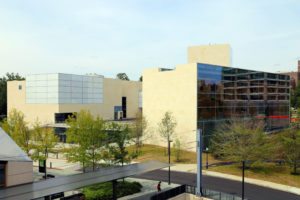
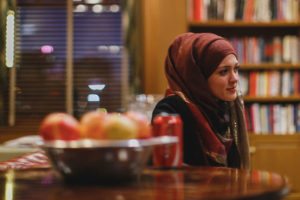
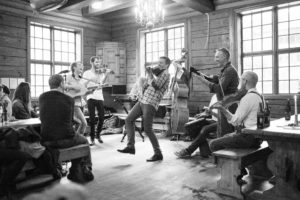

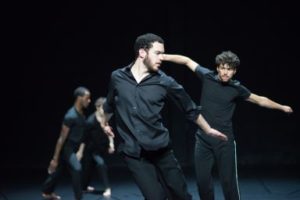

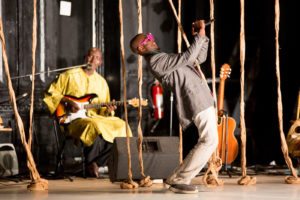
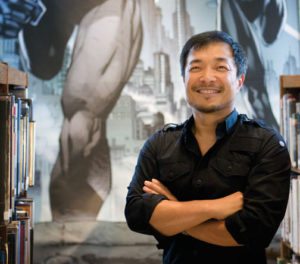
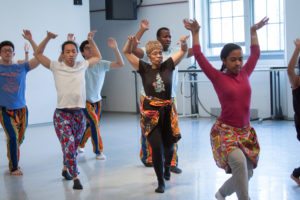
 © 2017 the Trustees of Princeton University
© 2017 the Trustees of Princeton University